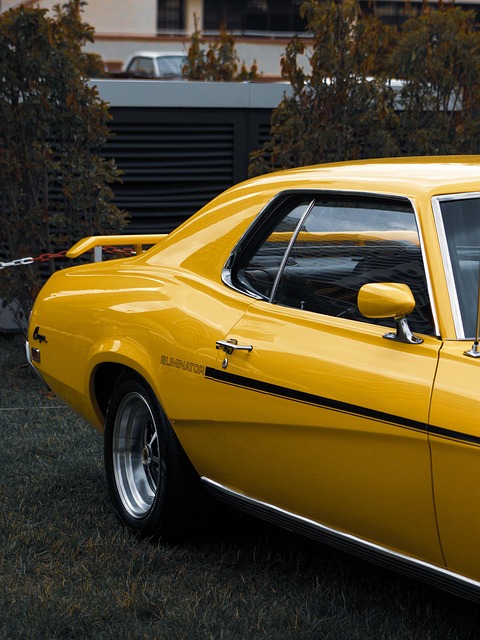Mercedes Active Ambient Lighting: Unveiling AMG vs Base Model Differences
Mercedes Active Ambient Lighting is a revolutionary feature that transforms vehicle interiors with c…….
In the ever-evolving automotive industry, where innovation meets luxury, Mercedes-Benz has consistently pushed boundaries, setting new standards in vehicle technology. One such groundbreaking feature that has captured the attention of both car enthusiasts and designers is Mercedes Active Ambient Lighting. This advanced system transforms the driving experience by offering a dynamic lighting solution that enhances interior aesthetics and passenger comfort. In this comprehensive article, we will embark on a journey through the world of Mercedes Active Ambient Lighting, exploring its technical intricacies, global impact, and the excitement it brings to the automotive landscape.
Definition: Mercedes Active Ambient Lighting is an innovative technology that allows vehicles to emit customizable ambient light within their interiors, creating a unique atmosphere for drivers and passengers. This system goes beyond traditional interior lighting by offering dynamic, adjustable lighting scenes that adapt to various driving conditions, moods, and personal preferences.
Core Components:
LED Lighting System: At the heart of this technology is a sophisticated LED (Light Emitting Diode) lighting array strategically placed throughout the vehicle’s interior. These LEDs are highly efficient, offering vibrant colors and precise control over brightness and intensity.
Central Control Unit: A powerful computer module acts as the brain of the system, managing and coordinating the various lights. It processes data from sensors and inputs from the driver to create dynamic lighting scenarios.
Sensors and Input Devices: Various sensors monitor factors like vehicle speed, weather conditions, time of day, and passenger presence. Additionally, input devices like touchscreens, voice commands, or smartphone apps allow drivers and passengers to personalize their lighting experience.
Historical Context: The concept of ambient lighting in vehicles is not new, but Mercedes-Benz has taken it to unprecedented heights with its Active Ambient Lighting system. This technology builds upon traditional interior lighting systems, which often featured static, uniform lighting. By introducing dynamic control and customization, Mercedes has created a revolutionary experience that sets them apart from competitors.
Mercedes Active Ambient Lighting has made a significant global impact, captivating automotive enthusiasts worldwide. Its influence can be observed across different regions, each with its unique cultural preferences and market dynamics:
Europe: Known for its luxury car heritage, Europe has embraced this technology with enthusiasm. Mercedes’ home market, Germany, has seen widespread adoption, with many premium vehicle manufacturers following suit. The focus here is often on creating a sophisticated and personalized driving environment.
North America: In the US and Canada, the automotive industry is highly competitive, and luxury brands are constantly seeking ways to differentiate themselves. Active Ambient Lighting offers a unique selling point, appealing to tech-savvy buyers who appreciate customization and comfort.
Asia Pacific: This region, encompassing countries like Japan, South Korea, and China, has a strong culture of innovation and technology integration. Mercedes’ partners in this area have quickly incorporated Active Ambient Lighting into their luxury vehicle lines, catering to discerning local tastes.
Trends Shaping the Future:
Customization and Personalization: Consumers worldwide are demanding more personalized experiences, and automotive lighting is no exception. Mercedes’ system allows for individualization of color, intensity, and patterns, ensuring each driver can create their ideal ambiance.
Wellness and Comfort: With a growing focus on in-cabin wellness, ambient lighting is being recognized as a tool to enhance relaxation and comfort. Mercedes Active Ambient Lighting offers calming blue tones and warm white lights, creating an atmosphere that promotes tranquility during long journeys.
Integration with Smart Devices: The trend towards seamless connectivity is evident in the automotive industry. Mercedes’ system can be controlled via smartphone apps, allowing owners to adjust lighting settings remotely or sync them with their personal preferences.
The economic implications of Mercedes Active Ambient Lighting are significant, impacting both the automotive industry and its supporting ecosystems:
Market Dynamics: The global interior lighting market for vehicles is experiencing growth, driven by increasing consumer demand for premium features. According to a report by Grand View Research, the market size was valued at USD 21.8 billion in 2020 and is expected to grow at a CAGR of 7.5% from 2021 to 2028. Mercedes’ entry into this market with its advanced Active Ambient Lighting system has positioned them as a leader in innovation.
Investment Patterns: Major automotive manufacturers are investing heavily in research and development (R&D) to incorporate cutting-edge technologies like ambient lighting into their vehicle offerings. This investment not only enhances the customer experience but also drives long-term brand value and loyalty.
Economic Systems and Employment: The production and implementation of this technology contribute to various economic sectors, including automotive manufacturing, electronics, and software development. It creates job opportunities in design, engineering, and marketing, fostering local economies.
Mercedes Active Ambient Lighting has been at the forefront of technological innovation, setting new standards for vehicle lighting systems:
Dynamic Lighting Scenarios: The system can create various lighting scenes, from vibrant and energetic to calm and relaxing, adapting to different driving conditions and passenger preferences. This dynamic approach enhances the overall driving experience and offers a unique selling point for Mercedes vehicles.
Color and Pattern Control: With millions of possible color combinations, drivers can personalize their interior lighting. From subtle nuances to bold statements, this level of control allows individuals to express their style and create an atmosphere that suits their mood.
Integration with Advanced Driver Assistance Systems (ADAS): Mercedes has successfully integrated Active Ambient Lighting with its ADAS features. For instance, during adverse weather conditions, the system can adjust lighting to enhance visibility and create a more alert driving environment. This synergy between technology showcases Mercedes’ commitment to safety and comfort.
Future Prospects: As LED technology continues to evolve, Mercedes can expect even greater efficiency, brighter lights, and wider color gamuts. Additionally, advancements in automation and artificial intelligence may enable the system to learn individual driver preferences and automatically adjust settings accordingly.
The development and implementation of Mercedes Active Ambient Lighting are subject to various policies and regulations, ensuring consumer safety and environmental sustainability:
Safety Standards: Automotive lighting systems must comply with stringent safety regulations, particularly regarding visibility and glare. Mercedes conducts extensive testing to ensure their ambient lights meet or exceed these standards, providing optimal illumination without causing driver discomfort.
Environmental Considerations: The automotive industry is under increasing pressure to reduce its environmental footprint. LED technology, which forms the basis of Active Ambient Lighting, offers significant energy efficiency compared to traditional incandescent bulbs. This contributes to Mercedes’ overall sustainability goals and aligns with global efforts to combat climate change.
Regulatory Compliance: Different regions have varying regulations regarding vehicle lighting. Mercedes must adhere to these local laws while ensuring their system remains innovative and competitive globally. For instance, the European Union’s EC Regulation 76/2008 sets out requirements for vehicle lighting systems.
Despite its numerous advantages, Mercedes Active Ambient Lighting faces certain challenges and criticisms that require thoughtful solutions:
Initial Cost: Implementing advanced lighting systems can be expensive, which may deter some buyers. However, as technology becomes more mainstream, production costs will likely decrease, making it accessible to a broader market.
Power Consumption: While LED lights are energy-efficient, the complexity of the system and additional electrical components might slightly increase overall power consumption. Careful engineering and smart power management strategies can mitigate this issue.
Critical Reception: Some critics argue that while the technology is impressive, it may divert attention from other essential safety features. However, Mercedes has addressed this by ensuring the lighting system operates in conjunction with its comprehensive ADAS suite, enhancing overall vehicle safety.
Strategic Solutions:
Package as a Premium Feature: Positioning Active Ambient Lighting as a premium option can target buyers willing to invest in advanced technology. This strategy allows Mercedes to maintain profitability while making the feature more accessible to specific market segments.
Educate Consumers: Creating awareness campaigns that highlight the benefits and versatility of this system can change perceptions. Demonstrating its role in enhancing safety, comfort, and customization will help attract a wider audience.
Continuous Innovation: Mercedes should continue pushing technological boundaries, making the system more efficient, durable, and cost-effective. This ongoing innovation will solidify their position as industry leaders.
The following case studies illustrate successful implementations of Mercedes Active Ambient Lighting, showcasing its versatility and impact:
Case Study 1: Mercedes-Benz S-Class (2020 onwards): The flagship S-Class sedan features a sophisticated lighting system that enhances the luxury experience. The dynamic lighting scenes adjust based on driving conditions, weather, and vehicle occupancy. For instance, during nighttime drives, the ambient lights create a calming atmosphere with warm white hues, while daytime settings offer vibrant colors to match the exterior design. This case study exemplifies how Mercedes integrates lighting into the overall vehicle experience.
Case Study 2: Mercedes-AMG GT (2018-2022): The high-performance AMG GT sports car utilizes Active Ambient Lighting to create a unique, energetic environment. The system offers dynamic patterns and colors, enhancing the driver’s connection with the car. For example, during track days, the lights can shift from aggressive neon hues to subtler shades, providing a visual contrast that matches the vehicle’s performance.
Case Study 3: Customization in Private Jets (2021-present): Mercedes has collaborated with private jet manufacturers to bring Active Ambient Lighting to the skies. In luxury jets, passengers can personalize their lighting experiences, creating calming or vibrant atmospheres during long-haul flights. This application showcases the system’s versatility and its ability to transform spaces beyond traditional automobiles.
The future of Mercedes Active Ambient Lighting appears bright, with numerous growth areas and emerging trends on the horizon:
Integration with Autonomous Vehicles: As autonomous driving technology advances, ambient lighting can play a significant role in shaping the passenger experience. It can create calming environments during long journeys or transform into vibrant spaces for social interactions in shared mobility scenarios.
Enhanced User Interaction: Future systems may incorporate gesture controls, voice commands, and advanced smartphone integrations, allowing users to interact with lighting settings intuitively.
Wellness Technology: The intersection of automotive lighting and wellness is expected to grow. Advanced ambient lighting can be synchronized with mood-enhancing music, aromatherapy, and other wellness features to create holistic in-cabin experiences.
Sustainable Materials: Mercedes may explore the use of sustainable materials for light fixtures and control modules, aligning with their environmental sustainability goals.
Mercedes Active Ambient Lighting has emerged as a transformative technology, redefining interior lighting in vehicles and setting new standards for luxury and innovation. Its global impact is evident across diverse markets, with consumers embracing personalized, dynamic lighting experiences. As technological advancements continue apace, Mercedes remains at the forefront of this revolution, shaping the future of automotive interiors.
Q: How does Active Ambient Lighting improve the driving experience?
A: It enhances the overall driving experience by offering a customizable lighting environment that adapts to various conditions. From adjusting brightness for better visibility to creating calming atmospheres, it caters to both functional and emotional needs.
Q: Can I control the lighting settings from my smartphone?
A: Yes, Mercedes Active Ambient Lighting is often paired with dedicated apps, allowing users to adjust lighting scenes, colors, and patterns remotely. This feature ensures convenience and personalization.
Q: Is this technology safe for my eyes during night driving?
A: The system is designed with safety in mind, ensuring lighting does not cause glare or affect driver visibility. Careful adjustments to brightness and color temperature help maintain optimal eye comfort during all driving conditions.
Q: How does Active Ambient Lighting contribute to vehicle sustainability?
A: By utilizing energy-efficient LED technology, this system reduces overall power consumption compared to traditional bulbs. This contributes to Mercedes’ environmental sustainability efforts and aligns with global initiatives to combat climate change.
Q: Can I customize the lighting for different passenger profiles?
A: Absolutely! One of the key advantages is the ability to create personalized lighting scenes for individual drivers or passengers. You can save preferred settings, ensuring a tailored experience for everyone in the vehicle.

Mercedes Active Ambient Lighting is a revolutionary feature that transforms vehicle interiors with c…….

Mercedes Active Ambient Lighting (MAAL) is a revolutionary LED technology that transforms vehicle in…….

Mercedes Active Ambient Lighting revolutionizes automotive interiors with customizable, mood-setting…….

Mercedes Active Ambient Lighting revolutionizes vehicle interiors with customizable, dynamic LED lig…….

Mercedes Active Ambient Lighting enhances driving with customizable LED interior lighting, but issue…….

Mercedes Active Ambient Lighting is a revolutionary feature that transforms car interiors by seamles…….

Mercedes Active Ambient Lighting is a revolutionary LED system that transforms vehicle interiors wit…….

Mercedes Active Ambient Lighting transforms car interiors with customizable, dynamic lighting, enhan…….